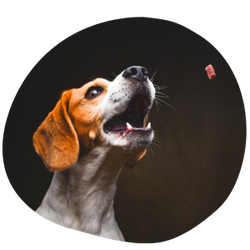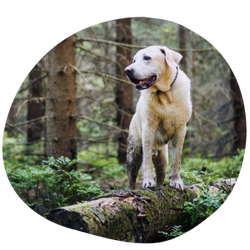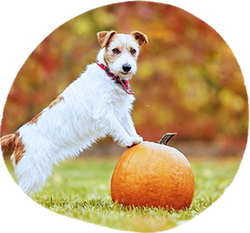No Products in the Cart
Dog Mushing: The Ultimate Guide

Hi, Jope's squad!
Dog mushing is an extreme technique that tests the friendship between humans and their sled dogs in cold terrain. It is a centuries-old custom that evolved from Indigenous Arctic survival strategies to become one of the most popular pastimes among enthusiasts worldwide.
From its humble beginnings in northern Europe, North America, and Siberia to the now-competitive Iditarod and Yukon Quest, dog sledding celebrates musher friendship and our lively four-legged companions.
Dog mushing has become an exciting activity for both families and individuals. This activity provides a unique opportunity to explore snowy terrain while connecting with three magnificent creatures, from watching an Alaskan Husky-led dog sled team race through harsh mountains and forests in Alaska to taking a quiet winter hike through national parks with these lovable four-legged bombs.
This dog sled learning guide includes racing history, breed information, and seasonal dog care suggestions.
History of Dog Mushing

Early beginnings and traditional uses
Sleds, harnesses, and dog bones found in Siberia show that dog mushing has existed since at least 6000 BC. Native people in the Arctic and sub-Arctic parts of North America, Northern Europe, and Siberia depended on sled dogs to move around in the harsh winter landscapes, carry goods, and hunt. This old partnership was crucial for human growth and adaptation to cold conditions.
Evolution of dog mushing over the centuries
In the 1600s, French Coureurs Des Bois were the first Europeans to use dog sleds to travel across New France and do business. The English "word mush" comes from the French word "Marche," which means "walk" or "move." As the number of Europeans living in the north increased, dog sledding became a critical way to get around.
People looking for gold in the Klondike in the late 1890s used sled dogs to navigate the rough terrain of Alaska and the Yukon. This brought dog mushing to the attention of people all over the world. During this time, we got better at mushing and created specialized dog types like the Alaskan Husky.
Significant historical events and figures in dog mushing
Roald Amundsen, a Norwegian explorer, used sled dogs to reach the South Pole in 1911. This showed how functional dog teams can be for polar travel. The 1925 serum run to Nome, Alaska, was the most famous event in the history of mushing. Over 674 miles of dangerous terrain, mushers and their teams carried diphtheria antitoxin to the town, which prevented an epidemic.
These days, snowmobiles have mostly replaced sled dogs for practical reasons, but mushing is still very popular as a sport and a fun activity. Races like the Iditarod and the Yukon Quest continue to celebrate this rich history and the special bond between mushers and their dogs.
Types of Dog Mushing
Recreational Mushing
For Leisure and Exercise:
The primary purpose of recreational mushing is to move across winter landscapes in a pleasurable manner. It is appropriate for all ages and families, and it is a beautiful way to get the dogs out from underfoot while everyone hikes.
Family-Friendly Activities:
The more energetic families can also go on dog sled rides along beautiful tracks, while the kids will enjoy being dragged by effervescently hyper dogs through the countryside. These activities will make you feel more adventurous and connected to nature.
Competitive Mushing
Sled Dog Races (e.g., Iditarod, Yukon Quest):
Professional mushers and their crews compete in some dramatic, high-stakes races that test the limits of distance racing. However, the Iditarod and Yukon Quest are two of the most epic events in sledding history, with mushers from all over the world competing and spectators flocking to watch.
If you ever go to France around January, and you love Sled Dog races, check La Grande Odyssée.
Sprint Races vs. Distance Races:
Sprints Although long-distance sled dog races usually stretch hundreds of kilometers, sprint dog racing is a fast and demanding sport in which dogs traverse shorter distances at relatively high speeds. Various events are run differently, which calls for appropriate training and racing plans.
Working Mushing
Transportation in Remote Areas:
Some rural regions still use many dogs for transportation or recreation, but even these activities are competitive. Extreme weather does not stop dog teams from transporting crucial supplies and resources into remote areas.

Search and Rescue Operations:
When tree canopies and heavy snowfall prevent human rescuers from finding smells, sled dogs can. Their mobility across rugged terrain makes them valuable assets in times of disaster.
Sled Dog Breeds Commonly Used in Mushing
Alaskan Husky

Alaskan Huskies are known for their agility, speed, and endurance—perfect for mushing. Often the best choice for sprint and long-distance races, these mixed breeds are specially developed for mushing. They are particularly suited for the rigors of competitive mushing because of their strong work ethic, high energy level, and solid build.
Siberian Husky

Siberian Huskies are well-known for their remarkable looks, which exhibit wolf-like traits and expressive blue or multicolored eyes. They are amiable, gregarious, strong, and resilient enough for long-distance mushing. Though they need expert handlers because of their autonomous character, their strong pack mentality and teamwork make them attractive options for leisure and competitive mushing.
Alaskan Malamute

Alaskan Malamutes have a sturdy frame that helps them carry huge loads, making them bigger and stronger than Huskies. Their power and endurance are perfect for working mushing, especially in goods and transportation jobs. Although they can engage in recreational mushing, their size, and strength are more suited for hauling and working purposes than for racing.
Samoyed

Samoyeds are unique in their thick, fluffy coats and happy attitude, which make them suitable for mushing. Strong and resilient, they are ideal for cold climate mushing. Because of their kind and helpful attitude, Samoyeds are lovely trail companions. Although they shine in leisurely mushing, their power and endurance are admirable, even if they might not be as competitive in racing as some other breeds.
Greyster

Greysters, a crossbreed of Greyhounds and German Shorthaired Pointers, are known for their exceptional speed and athleticism, making them highly competitive in sprint mushing. Their lean, muscular build, combined with their natural hunting instincts, results in a breed that excels in short, intense bursts of energy. Greysters are particularly popular in European sprint races, where their explosive speed and agility give them an edge. However, they require careful training and handling due to their high energy levels and need for mental stimulation. While not typically used for long-distance mushing, Greysters are a top choice for those focused on speed and competition in short-distance events.
Other Breeds
Beyond the most popular mushing breeds, many mixed breeds and less-known canines shine in mushing. These dogs can provide dog teams with unique skills and qualities, adding to sled dog teams' variety and flexibility. Depending on their unique characteristics and training breeds, such as the Greenland Dog, the Canadian Eskimo Dog, and even some retriever mixes, they can be successful at mushing.
Equipment Needed for Dog Mushing

Sleds
Types of Sleds (e.g., Racing Sleds, Freight Sleds):
Different types of sled dogs are used based on the mushing activity. Racing sleds are lightweight and designed for speed, while freight sleds are sturdier and built to carry heavy loads.
Choosing the Right Dog Sled:
Selecting the appropriate dog sled depends on the musher's specific needs and the type of mushing. Factors such as terrain, weather conditions, and the weight of the load should be considered.
Harnesses
Types of Harnesses (e.g., X-back, H-back):
Harnesses are crucial for the comfort and safety of sled dogs. X-back harnesses distribute the pulling force evenly across the dog's body, while H-back harnesses provide additional support for heavy loads.
Proper Fitting and Safety:
Ensuring the correct fit of harnesses is essential to prevent injuries and maximize performance. Regular checks and adjustments help maintain the dogs' comfort and safety during mushing activities.
Lines and Gangs
Ganglines, Tug Lines, and Snub Lines:
These lines are essential for connecting the dog team to the sled. Ganglines link the dogs in a single line, tug lines attach each dog to the gangline, and snub lines secure the dog sled when stationary.
Importance of Quality and Maintenance:
Using high-quality lines and regularly inspecting them for wear and tear is crucial for the mushing team's safety and efficiency. Proper maintenance ensures reliability during mushing activities.
Booties and Jackets
Protecting Dogs' Paws and Bodies:
Booties protect the dogs' paws from ice, snow, and rough terrain, while jackets provide warmth in extreme cold weather. This protective gear is essential for the dogs' well-being, especially in harsh weather conditions.
Situations Requiring Additional Gear:
Depending on the environmental conditions and the duration of the mushing activity, additional gear, such as reflective vests or cooling coats, may be necessary to ensure the dogs' safety and comfort.
Training for Dog Mushing

Basic Commands
-
Key Commands (e.g., "Hike," "Gee," "Haw," "Whoa" ):
Training sled dogs requires teaching them specific commands to navigate and control the sled. "Hike" signals the dogs to start moving, "Gee" directs them to turn right, "Haw" to turn left, and "Whoa" to stop. Consistent and clear command usage is essential for effective communication between the musher and the dogs.
-
Training Techniques and Tips:
Start training with basic obedience commands and gradually introduce mushing-specific ones. Positive reinforcement, such as treats and praise, helps reinforce good behavior. Short, frequent training sessions are more effective than long, infrequent ones.
Building Endurance and Strength
-
Training Schedules and Routines:
Developing the dogs' endurance and strength involves a structured training schedule. Start with short runs, gradually increasing distance and intensity. Regular training helps build the dogs' physical condition and prepares them for more extended, challenging mushing activities.
-
Importance of Conditioning:
Consistent conditioning is crucial for maintaining the dogs' health and performance. Proper warm-up and cool-down routines and adequate rest periods prevent injuries and ensure the dogs are in peak condition.
Team Dynamics
-
Understanding Pack Behavior and Leadership Roles:
Successful mushing relies on understanding the dynamics within the dog team. Each dog has a specific role: lead, swing, team, and wheel. Recognizing and utilizing the dog sled team's strengths fosters a cohesive and efficient team.
-
Building Trust and Cooperation Within the Team:
Establishing trust between the musher and the dogs, as well as among the dogs themselves, is vital. Consistent training, positive reinforcement, and mutual respect contribute to a harmonious and effective dog team.
Health and Welfare of Mushing Dogs
Mushing dogs are elite canine athletes who require specialized care to maintain their health and performance. As veterinarians, we recommend a holistic approach to their well-being, focusing on nutrition, medical care, and proper rest.
Nutrition
Dietary Needs for High-Energy Dogs:
-
A balanced, high-quality diet rich in proteins and healthy fats
-
Tailored homemade meals prepared by a veterinary nutritionist
-
Balanced fresh or raw food approved by a veterinarian
Supplements and Hydration:
-
UC-II® collagen for joint health support.
-
Omega-3 fatty acids (EPA and DHA) for anti-inflammatory benefits.
-
Curcumin from turmeric for additional joint support.
-
Proper hydration, especially during intense training or racing.


Recent studies have shown that UC-II® collagen, omega-3 fatty acids, and curcumin are more effective for joint health than glucosamine. These ingredients, found in high-quality joint supplements like Jope's Hip & Joint Dog Chews, can help maintain joint mobility and comfort in mushing dogs.
Always consult with your veterinarian to create a tailored health plan for your mushing team, ensuring they receive the best care for their unique needs.
Medical Care
Common Health Issues in Mushing Dogs:
-
Joint problems, particularly in high-impact areas.
-
Paw injuries from prolonged contact with snow and ice
-
Potential for dehydration and exhaustion
Preventative Care:
-
Regular veterinary check-ups to monitor overall health
-
Routine vaccinations and parasite control
-
Dental care to prevent oral health issues
Rest and Recovery
Importance of Rest Periods:
-
Balanced training schedule with adequate recovery time
-
Proper sleep and relaxation to avoid overexertion
Monitoring for Fatigue and Injury:
-
Watch for signs like excessive panting or reluctance to move.
-
Address any limping or changes in gait immediately.
Safety Considerations
Weather and Environmental Hazards
Preparing for Extreme Cold and Snow:
Proper preparation for cold weather includes using insulated gear for the musher and the dogs. Understanding weather patterns and being prepared for sudden changes is crucial for safety.
Navigating Difficult Terrains:
Familiarity with the trail and awareness of potential hazards, such as thin ice or steep inclines, help ensure a safe mushing experience. Using a snow hook to anchor the glacier dog sled in challenging conditions adds an extra layer of security.


Musher's Safety Gear
Clothing and Accessories for Mushers:
Mushers should wear layered, moisture-wicking clothing, insulated boots, and gloves to stay warm and dry. Accessories like goggles and face masks protect against wind and snow.
Emergency Preparedness and First Aid:
An emergency kit with first aid supplies, a GPS device, and communication tools is essential for handling unexpected situations. Training in basic first aid for humans and dogs can make a significant difference in emergencies.
Trail Etiquette
Respecting Other Mushers and Wildlife:
Good trail etiquette involves yielding to faster teams, keeping a safe distance from other dogs, and respecting wildlife habitats. Clear communication with other mushers helps maintain a harmonious environment.
Trail Sharing and Communication:
Communicating with other trail users using signals and vocal commands ensures everyone's safety. Maintaining control of the dog team and being aware of surroundings prevents accidents and conflicts.
Famous Dog Mushing Events and Races

Iditarod Trail Sled Dog Race
History and Significance:
The Iditarod Trail Sled Dog Race, commonly known as the Iditarod, is an annual long-distance sled dog race held in Alaska, specifically from Anchorage to Nome. The race commemorates the 1925 Serum Run to Nome, where teams of sled dogs transported diphtheria antitoxin to combat an outbreak.
Established in 1973, the race covers approximately 1,049 miles (1,600 km) and is often called "the last great race on Earth" due to its challenging conditions and rich history.
Also Read - Are collagen chews safe for dogs
Key Facts and Recent Winners:
The Iditarod typically takes place in early March. Mushers and their teams of 12 to 16 dogs compete throughout 8 to 15 days, depending on weather and trail conditions.
Recent champions include Dallas Seavey, who set a record time of 7 days, 14 hours, 8 minutes, and 57 seconds in 2021, and Joar Leifseth Ulsom, who has also achieved significant victories in recent years.
Yukon Quest
Unique Aspects and Challenges:
The Yukon Quest is another prestigious long-distance sled dog race that spans about 1,000 miles (1,600 km) between Fairbanks, Alaska, and Whitehorse, Yukon. Known for its remote and rugged terrain, the race challenges mushers and their dogs with extreme weather conditions and rugged landscapes, testing their limits and endurance.
Key Facts and Recent Winners:
The Yukon Quest occurs in February and attracts elite mushers worldwide. The race's challenging environment requires exceptional skill and resilience, and recent winners have demonstrated their expertise in navigating the treacherous route.
Other Notable Races
John Beargrease Sled Dog Marathon:
This race honors John Beargrease, a Native American mail carrier. It spans over 400 miles along Minnesota's North Shore and is recognized as one of the longest sled dog races in the contiguous United States.
Finnmarksløpet and Others:
The Finnmarksløpet in Norway is Europe's longest sled dog race, covering up to 1,200 kilometers. Other notable races include the Can-Am Crown in Maine and the La Grande Odyssée in France and Switzerland, each offering unique challenges and breathtaking landscapes.
Finding a Local Mushing Club or Community
Resources and Networks for Beginners:
Joining a local mushing club or community is an excellent way for beginners to access resources, training opportunities, and guidance from experienced mushers. These networks provide support, mentorship, and a sense of camaraderie, which is especially valuable for those new to the sport.
Participating in Local Events and Meetups:
Engaging in local events and meetups allows beginners to gain practical experience, ask questions, and build relationships within the mushing community. Attending these gatherings helps newcomers learn about the sport, connect with other enthusiasts, and find mentors or training opportunities.
Beginner Tips
Starting Small and Building Experience:
It is wise for beginners to start with short, manageable runs and gradually increase distance and difficulty as confidence and skill grow. Focusing on learning the basics, such as commands, sled handling, and dog care, is crucial before attempting more challenging trails or longer distances.
Learning from Experienced Mushers:
Seeking advice and mentorship from seasoned mushers is highly recommended, as they can share their knowledge, experience, and best practices. Observing and assisting experienced mushers provides invaluable insights into the sport's nuances, such as dog selection, training techniques, and race strategy.
Also Read - Hip Dysplasia for Dogs
Cost Considerations
Initial Investment vs. Ongoing Costs:
Dog mushing can be an expensive hobby, with initial investments in equipment (sleds, harnesses, dog jackets, etc.) and acquiring dogs, followed by ongoing maintenance, training, veterinary care, and food costs.
Budgeting for Equipment, Care, and Travel:
Careful budgeting is essential to manage expenses effectively. Allocating funds for high-quality equipment, regular veterinary check-ups and vaccinations, and travel to events and races is necessary to ensure the well-being of both the dogs and the musher.
Additionally, beginners must consider the time commitment required for dog mushing, as caring for a team of sled dogs involves daily exercise, training, and maintenance tasks. Ensuring one has the necessary time and dedication to the sport is crucial before starting.
Conclusion
Dog mushing is a thrilling sport that offers a unique bond between humans and their canine partners. As we've explored, it combines the joy of outdoor adventure with the responsibility of caring for high-performance canine athletes. Whether you're drawn to competitive racing or recreational mushing, remember that the health and well-being of your dogs should always come first.
As you embark on your mushing journey, consider joining local clubs and participating in events to connect with the vibrant mushing community. Most importantly, prioritize your dogs' health, particularly their joint care. High-quality joint supplements, like those offered by Jope, can be crucial in maintaining your team's mobility and comfort.
UC-II® collagen, present in Jope, has proven effective in supporting young, healthy dogs undergoing intense exercise routines. It has shown benefits over placebo by enhancing flexibility and alleviating discomfort following strenuous activity (much like the muscle and joint soreness we experience after exercise).
By embracing responsible and ethical mushing practices, including proper training, nutrition, and health care, you'll ensure your dogs' well-being and contribute to preserving this incredible sport for future generations. Remember, a happy, healthy dog team is the heart of every successful mushing adventure.


Carol
Passionate pet writer, devoted dog mom, and avid nature enthusiast.









Leave a comment